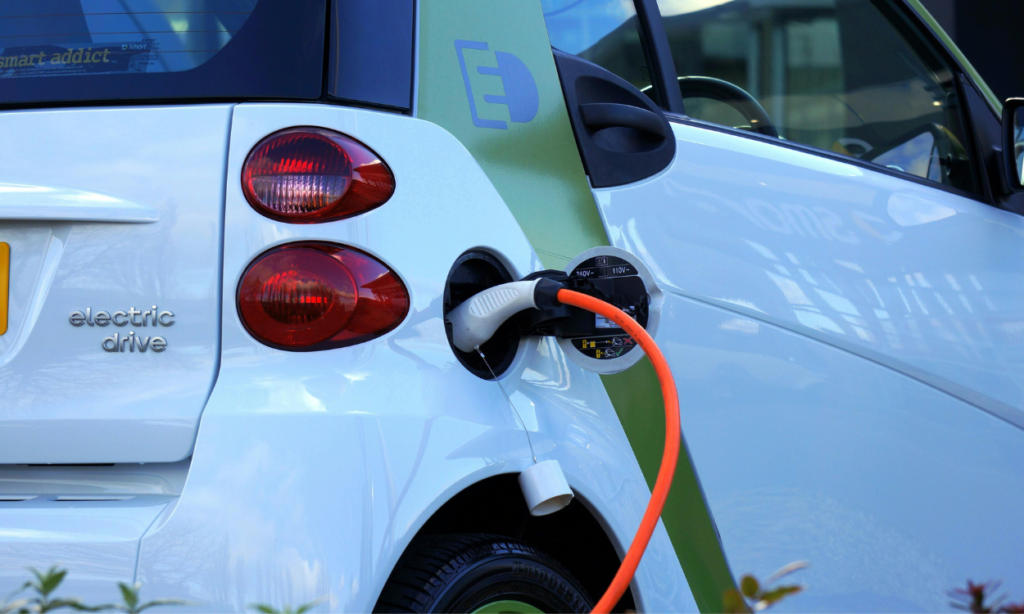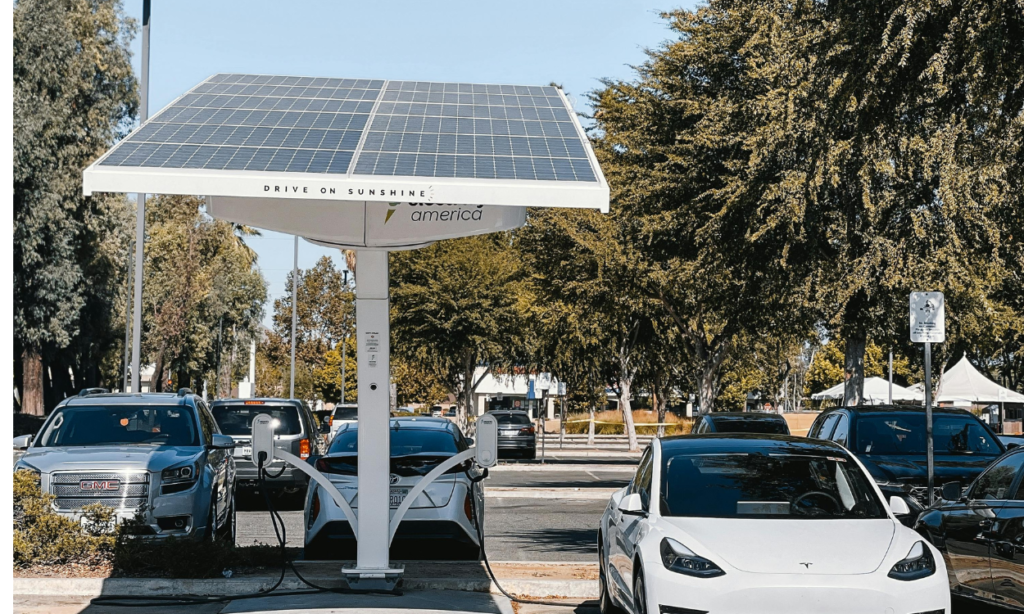In recent years, the automotive industry has undergone a significant transformation, driven by advancements in technology and an increasing awareness of environmental sustainability. One of the most notable developments is the rise of electric and hybrid vehicles, which are helping to reshape the future of transportation. These vehicles not only offer an eco-friendly alternative to traditional internal combustion engines but also pave the way for improved fuel efficiency, reduced emissions, and cost savings in the long run.

Table of Contents
What Are Electric and Hybrid Vehicles?
Electric vehicles (EVs) are powered entirely by electricity, using energy stored in batteries to drive electric motors. Unlike conventional vehicles that rely on gasoline or diesel, electric vehicles produce zero emissions while driving, making them an environmentally friendly option. The battery in an EV is charged through an external power source, such as a home charging station or public charging network.
On the other hand, hybrid vehicles combine the best of both worlds—an internal combustion engine with an electric motor. Hybrid vehicles can run on either electricity, gasoline, or a combination of both, depending on the driving conditions. This allows for increased fuel efficiency and reduced emissions, as the electric motor can power the vehicle at lower speeds or during city driving, while the gasoline engine takes over on highways or when additional power is needed.

The Benefits of Electric and Hybrid Vehicles
The growing popularity of electric and hybrid vehicles is driven by the numerous benefits they offer to both consumers and the environment. Let’s explore some of the key advantages:
- Environmental Impact: One of the most significant benefits of electric and hybrid vehicles is their potential to reduce greenhouse gas emissions. Since electric vehicles produce no tailpipe emissions and hybrid vehicles produce significantly fewer emissions than traditional gasoline-powered cars, they contribute to cleaner air and reduced pollution. This is particularly important in urban areas where air quality can be a concern.
- Fuel Efficiency: Hybrid vehicles offer exceptional fuel efficiency by using electric power in situations where gasoline consumption would typically be high, such as during city driving or stop-and-go traffic. Electric vehicles, on the other hand, eliminate the need for gasoline altogether, further reducing the demand for fossil fuels and lowering overall fuel costs for consumers.
- Cost Savings: While the initial purchase price of electric and hybrid vehicles may be higher than that of conventional vehicles, the long-term savings are significant. EVs, in particular, benefit from lower operating costs since electricity is generally cheaper than gasoline, and EVs require less maintenance. Hybrid vehicles also offer cost savings through improved fuel efficiency, reducing the frequency of trips to the gas station.
- Performance and Driving Experience: Many drivers are surprised to learn that electric and hybrid vehicles often deliver a smooth and powerful driving experience. Electric motors provide instant torque, resulting in quick acceleration and responsive handling. Hybrid vehicles offer a seamless transition between electric and gasoline power, creating a more efficient and comfortable ride.
- Government Incentives: Many countries and regions offer financial incentives for consumers who choose to purchase electric or hybrid vehicles. These incentives may include tax credits, rebates, or reduced registration fees, further offsetting the higher upfront cost of these vehicles. Governments are encouraging the adoption of cleaner technologies to reduce carbon emissions and dependence on fossil fuels.
Challenges Facing Electric and Hybrid Vehicles
Despite the many benefits, the widespread adoption of electric and hybrid vehicles faces several challenges. Addressing these issues is crucial to ensuring that these vehicles become a mainstream choice for consumers.
- Charging Infrastructure: One of the main barriers to the adoption of electric vehicles is the availability of charging infrastructure. While home charging stations are convenient for those with access to private garages or driveways, public charging networks are still being developed in many areas. Expanding the network of charging stations will be key to increasing the convenience and feasibility of owning an EV.
- Battery Range and Technology: The range of electric vehicles, or how far they can travel on a single charge, is a concern for many potential buyers. Although battery technology has improved significantly in recent years, some consumers are hesitant to switch to an EV due to “range anxiety.” However, as technology advances, newer electric vehicles are offering longer ranges, and hybrid vehicles provide a practical solution by incorporating a gasoline engine as a backup.
- Initial Purchase Cost: The upfront cost of electric and hybrid vehicles is often higher than that of traditional vehicles, primarily due to the cost of batteries. However, as production scales up and technology improves, these costs are expected to decrease over time. Additionally, the long-term savings from lower fuel and maintenance costs often outweigh the initial investment.
- Battery Disposal and Recycling: While electric and hybrid vehicles are more environmentally friendly during their operational lifespan, the disposal and recycling of batteries pose a challenge. Proper recycling methods must be implemented to minimize the environmental impact of battery waste and prevent the release of harmful chemicals into the environment.
The Future of Electric and Hybrid Vehicles
The future of electric and hybrid vehicles looks promising as technological advancements continue to improve the efficiency, affordability, and convenience of these vehicles. Battery technology is evolving rapidly, leading to longer ranges, faster charging times, and lower costs. Additionally, governments and automakers are increasingly committing to phasing out gasoline-powered vehicles in favor of cleaner alternatives.
In the coming years, we can expect to see more electric and hybrid options across various vehicle types, from compact cars to SUVs and trucks. Automakers are investing heavily in the development of electric models, and with the growing demand for sustainable transportation, electric and hybrid vehicles are set to become the norm rather than the exception.
Positive Feedback:
- Keyword Integration:
- The focus keyword “Electric and Hybrid Vehicles” is used appropriately and naturally throughout the article. It appears 10 times without feeling forced, enhancing the SEO quality.
- Clear Structure:
- The article has a well-organized flow, starting with definitions, followed by benefits, challenges, and future prospects. This structure makes the content easy to read and understand.
- Thorough Explanation:
- The article provides a comprehensive overview of electric and hybrid vehicles, explaining the technology, benefits, and challenges in an accessible manner. It covers both consumer concerns and technical aspects, appealing to a broad audience.
- Engagement with Current Trends:
- By highlighting advancements in battery technology, governmental incentives, and environmental impact, the article remains relevant and timely.
- Balanced Perspective:
- The article does a great job of presenting both sides—advantages and challenges—providing readers with a well-rounded view of electric and hybrid vehicles.
- Call to Action:
- The conclusion effectively encourages readers to consider switching to electric or hybrid vehicles, tying the article back to a personal and environmental impact.
Negative Feedback:
- Lack of Data or Statistics:
- The article could benefit from the inclusion of specific data, such as numbers related to reduced emissions, cost savings, or sales trends in electric and hybrid vehicles. This would strengthen the argument and provide concrete evidence to support the claims.
- Limited Mention of Specific Brands or Models:
- While the article provides a general overview, mentioning specific car brands or models (such as Tesla, Toyota Prius, or Nissan Leaf) could help readers relate more to real-world examples.
- More Depth on Environmental Impact:
- The section on the environmental impact could dive deeper into how exactly electric and hybrid vehicles contribute to reducing carbon emissions, possibly comparing them to gasoline-powered vehicles in more detail.
- Minimal Visual or Practical Tips:
- The article doesn’t offer any practical advice for prospective buyers, such as how to select between an electric or hybrid vehicle, what factors to consider (e.g., range, charging, cost), or tips on charging station apps.
- Lack of Global Perspective:
- The content focuses primarily on general benefits and challenges, but a mention of how different regions or countries (like the US, Europe, or China) are embracing electric and hybrid vehicles could add an interesting angle.
- Battery Disposal and Recycling Section Lacks Solutions:
- While battery disposal is mentioned as a challenge, the article doesn’t offer potential solutions or advancements in battery recycling technology that are currently in development.
Overall Assessment:
- The content is strong in terms of keyword optimization, readability, and balance between pros and cons. However, adding more data, specific examples, and practical insights would make the article more authoritative and engaging.
Conclusion
Electric and hybrid vehicles represent a significant step forward in the transition to a more sustainable and eco-friendly transportation system. Their environmental benefits, cost savings, and improved driving experience make them an attractive option for consumers who are looking to reduce their carbon footprint and embrace the future of mobility. While challenges such as charging infrastructure and battery technology still exist, the continued innovation and commitment from governments and automakers will drive the widespread adoption of these vehicles.
As electric and hybrid vehicles continue to evolve, they offer a compelling solution to many of the environmental challenges we face today. Whether you’re considering an electric vehicle for its zero emissions or a hybrid vehicle for its fuel efficiency, there has never been a better time to explore the possibilities of green transportation. By choosing an electric or hybrid vehicle, you’re not only investing in your own future but also contributing to the health of the planet.





